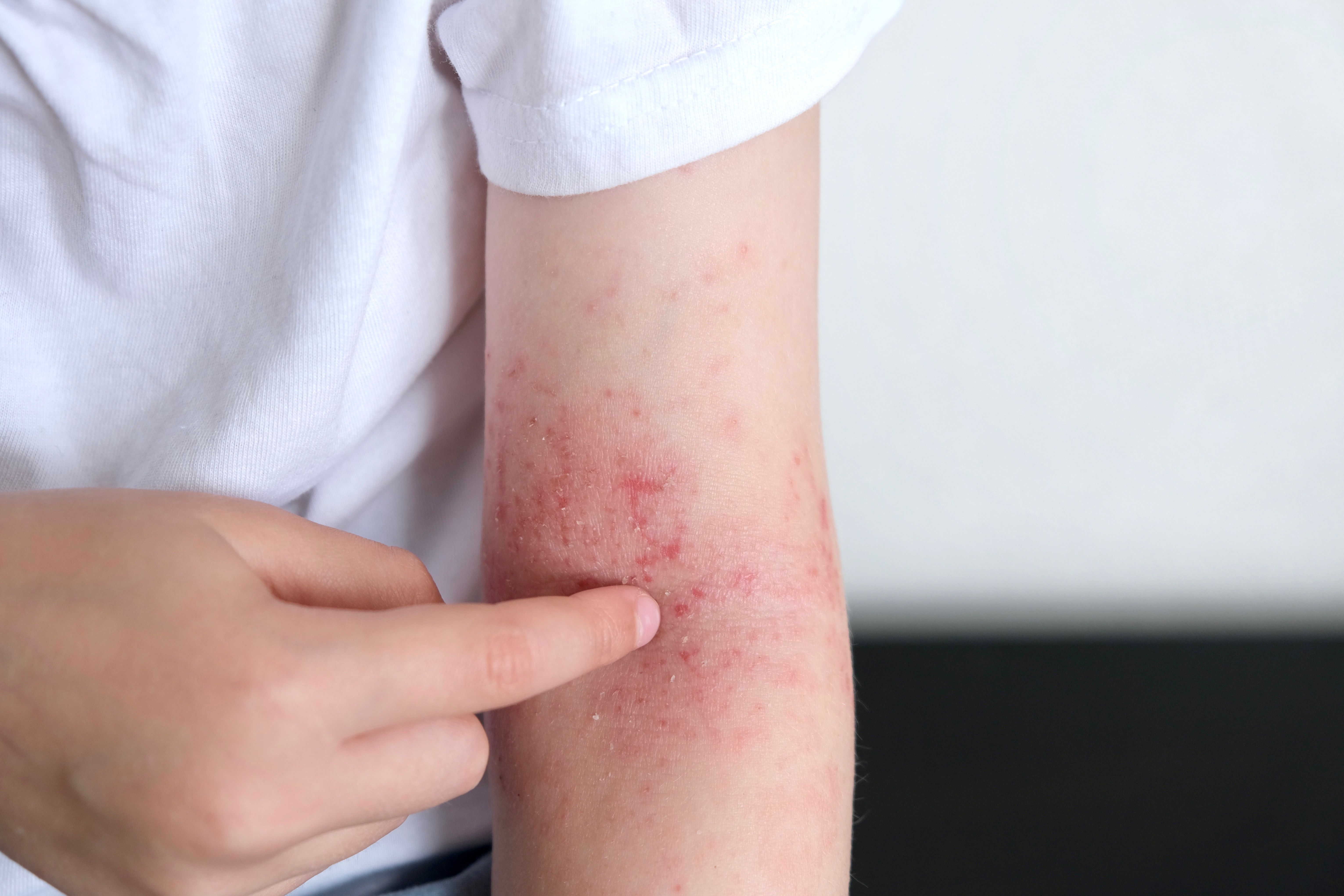News
Article
Disease Burden in Japanese Children Impacted by AD Severity
Author(s):
The study comprehensively described the atopic dermatitis (AD) burden among young Japanese patients with moderate or severe forms of the disease.
Atopic dermatitis (AD) severity in young Japanese patients had a high impact on disease burden, according to a new study published in Pediatric Dermatology.
The researchers explain that young patients with AD develop several atopic comorbidities and significant patient burden. Consequently, the researchers used results from the real-world Epidemiology of Children with Atopic Dermatitis Reporting on their Experience (EPI-CARE) study, focusing on the Japanese pediatric population, to better understand the effect of AD severity. EPI-CARE assessed AD prevalence in pediatric populations aged 6 months to 17 years across several countries, including Japan, evaluating AD severity and its impact on real-world disease burden.
The researchers collected data using a web-based survey between September 26, 2018, and March 5, 2019. They recruited patients via email, broad-reach portals, and special interest websites. The parents of children younger than 12 years, or the adolescents themselves, submitted survey responses. The survey consisted of 2 sections: The first section confirmed participant eligibility and collected demographic data, and the second evaluated disease severity and AD impact on patient disease burden.
The researchers evaluated AD disease severity through 3 methods:
- Patient-Oriented Eczema Measure (POEM), which ranges from 0 (lowest severity) to 28 (highest severity)
- Patient Global Assessment, which has a range of clear/mild, moderate, and severe
- Numerical rating scale (NRS), which ranges from 0 (lowest severity) to 10 (highest severity)
In the Japanese EPI-CARE pediatric population (N= 5702), the 12-month prevalence of diagnosed AD was 10.7% overall, 9.1% in children between the ages of 12 and 17 years, 10.3% in children aged 6 to 11 years, and 12.9% in children younger than 6 years. AD severity based on POEM was clear/mild in 63.3% of patients, moderate in 32.5%, and severe in 4.4%. Patients with severe AD had higher NRS scores for itching than those with clear/mild AD across all ages; the researchers noted the scores were higher in younger age groups, suggesting that itching lowers during puberty.
child with atopic dermatitis | Image credit: Марина Терехова - stock.adobe.com

More than two-thirds of patients had at least 1 atopic comorbidity, the most common being hay fever, asthma, seasonal allergies, and allergic urticaria. The researchers noted that asthma and allergic urticaria had similar prevalence across all ages, while hay fever and seasonal allergies were more prevalent in adolescents.
Overall, those with severe AD had a higher prevalence of most allergic comorbidities, especially patients younger than 6 years. The researchers noted that “at least 1 atopic comorbidity was increasingly present as patient age increased, occurring in 74.8% of children aged <6 years, 87.2% of those aged 6 to <12 years, and 93.1% of adolescents.”
Also, patients with moderate or severe AD had more emergency department visits in the past 12 months than those with mild AD, as hospitalizations increased with AD severity across all ages; the proportion of patients hospitalized was 2.9%, 9.2%, and 20.5% in those with mild, moderate, and severe AD, respectively. Consequently, across all ages, patients with moderate or severe AD missed approximately 3 times as many school days as those with mild AD.
To examine health-related quality of life (HRQOL), the researchers used the Children’s Dermatology Life Quality Index (CDLQI) and the Infants’ Dermatitis Quality of Life (IDQOL) index. They found that scores increased as AD severity did, meaning HRQOL decreased. The researchers explained that HRQOL decreased proportionally to AD severity in children aged 6 to 11 years and adolescents.
Additionally, when examining IDQOL scores in patients younger than 6 years, the researchers found that increased AD severity affected itching/scratching, time to sleep onset, and dressing/undressing comfort. Also, CDLQI scores showed that AD severity affected sleep and itching/pain in children between 6 and 11 years and adolescents.
The researchers acknowledged that their study had several limitations, including the survey being completed by adolescents or parents of children; this meant the data could display recall bias. Also, the data could have been affected by selection bias, as the study population was invited to participate in the survey.
Although it had limitations, the researchers explained that their study comprehensively described the AD burden within young Japanese patients with moderate or severe forms of the disease. They concluded that their study “highlights the medical need for safe treatments offering long-term disease control.”
Reference
Ohya Y, Saeki H, Nawata H, et al. The disease burden of pediatric patients with atopic dermatitis in Japan. Pediatr Dermatol. Published online August 15, 2023. doi:10.1111/pde.15399




